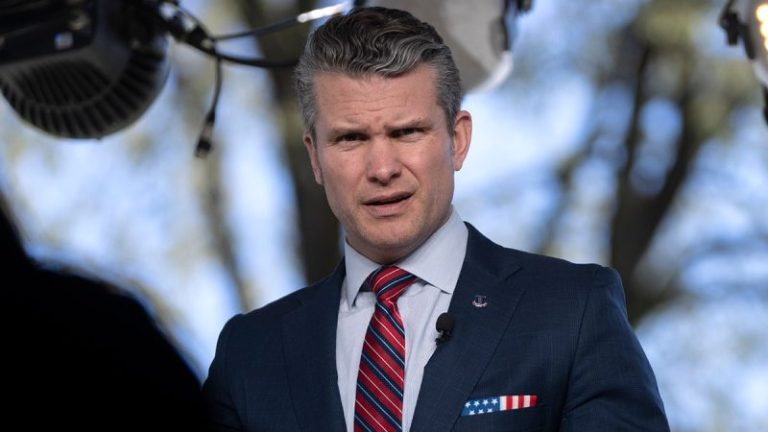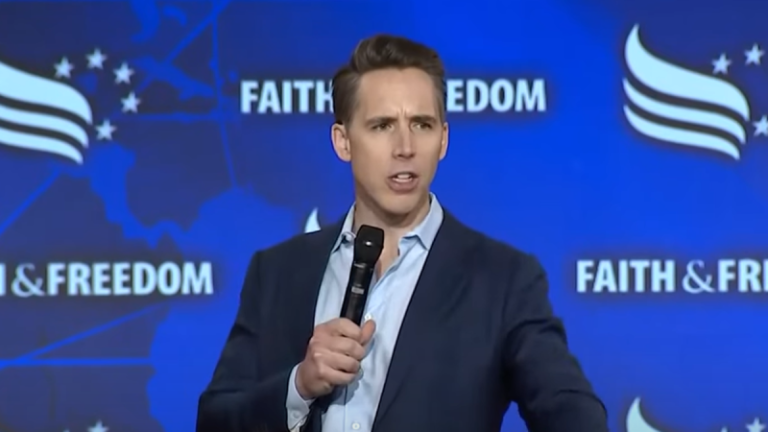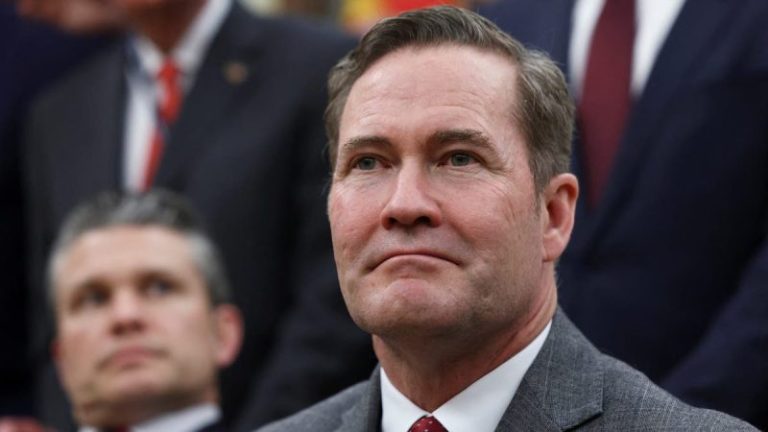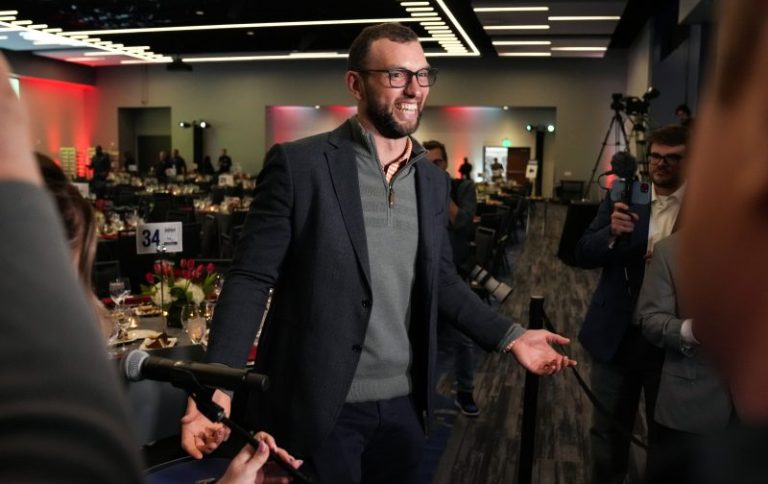The Atlantic published Wednesday what it described as the ‘attack plans’ at the center of a Signal text chain leak involving senior officials in the Trump administration.
Secretary of Defense Pete Hegseth and national security adviser Mike Waltz have faced calls to resign following revelations that the outlet’s editor-in-chief Jeffrey Goldberg was inadvertently added to a private group chat earlier this month in which Hegseth, Waltz, Vice President JD Vance and other top administration officials reportedly discussed impending airstrikes on Yemen’s Houthi rebels. Hegseth has said ‘nobody was texting war plans’ and Director of National Intelligence Tulsi Gabbard vowed during a Senate Intelligence Committee hearing Tuesday that there was ‘no classified material’ in the messages.
‘TEAM UPDATE: TIME NOW (1144et): Weather is FAVORABLE. Just CONFIRMED w/CENTCOM we are a GO for mission launch. 1215et: F-18s LAUNCH (1st strike package). 1345: ‘Trigger Based’ F-18 1st Strike Window Starts (Target Terrorist is @ his Known Location so SHOULD BE ON TIME – also, Strike Drones Launch (MQ-9s),’ Hegseth apparently wrote in a screenshot of a text message released Wednesday by The Atlantic.
‘1410: More F-18s LAUNCH (2nd strike package). 1415: Strike Drones on Target (THIS IS WHEN THE FIRST BOMBS WILL DEFINITELY DROP, pending earlier ‘Trigger Based’ targets). 1536 F-18 2nd Strike Starts – also, first sea-based Tomahawks launched,’ Hegseth reportedly continued, before adding ‘Godspeed to our Warriors.’
Waltz later allegedly wrote ‘The first target – their top missile guy – we had positive ID of him walking into his girlfriend’s building and it’s now collapsed,’ according to The Atlantic.
‘Excellent,’ read a message in response attributed to Vance.
The Atlantic said in its report Wednesday – titled ‘Here Are the Attack Plans That Trump’s Advisers Shared on Signal’ – that ‘the statements by Hegseth, Gabbard, Ratcliffe, and Trump – combined with the assertions made by numerous administration officials that we are lying about the content of the Signal texts – have led us to believe that people should see the texts in order to reach their own conclusions.’
‘There is a clear public interest in disclosing the sort of information that Trump advisers included in nonsecure communications channels, especially because senior administration figures are attempting to downplay the significance of the messages that were shared,’ wrote the Atlantic’s Goldberg and reporter Shane Harris.
‘Experts have repeatedly told us that use of a Signal chat for such sensitive discussions poses a threat to national security. As a case in point, Goldberg received information on the attacks two hours before the scheduled start of the bombing of Houthi positions. If this information – particularly the exact times American aircraft were taking off for Yemen – had fallen into the wrong hands in that crucial two-hour period, American pilots and other American personnel could have been exposed to even greater danger than they ordinarily would face,’ they also said.
Vance responded to the report Wednesday by declaring that ‘It’s very clear Goldberg oversold what he had.
‘But one thing in particular really stands out. Remember when he was attacking Ratcliffe for blowing the cover for a CIA agent? Turns out Ratcliffe was simply naming his chief of staff,’ he added.
The Atlantic report said ‘A CIA spokesperson asked us to withhold the name of John Ratcliffe’s chief of staff, which Ratcliffe had shared in the Signal chain, because CIA intelligence officers are traditionally not publicly identified.’
Waltz wrote on X ‘No locations. No sources & methods. NO WAR PLANS. Foreign partners had already been notified that strikes were imminent. BOTTOM LINE: President Trump is protecting America and our interests.’
White House Deputy Chief of Staff Taylor Budowich said in response to the report that ‘The Atlantic has already abandoned their bulls— ‘war plans’ narrative, and in releasing the full chat , they concede they LIED to perpetuate yet ANOTHER hoax on the American people. What scumbags!’
‘The Atlantic has conceded: these were NOT ‘war plans,’’ White House Press Secretary Karoline Leavitt added. ‘This entire story was another hoax written by a Trump-hater who is well-known for his sensationalist spin.’
Some Congressional Democrats have been calling for Hegseth’s ouster since the text chain leak was first reported.
House Minority Leader Hakeem Jeffries, the highest-ranking Democrat to do so, wrote a letter to President Donald Trump yesterday demanding that Hegseth be ‘fired immediately.’
‘The so-called Secretary of Defense recklessly and casually disclosed highly sensitive war plans — including the timing of a pending attack, possible strike targets and the weapons to be used –during an unclassified national security group chat that inexplicably included a reporter. His behavior shocks the conscience, risked American lives and likely violated the law,’ Jeffries wrote.
Pressed by a reporter yesterday about the matter, Hegseth claimed he has everything under control.
‘Nobody’s texting war plans,’ he said. ‘I know exactly what I’m doing, exactly what we’re directing, and I’m really proud of what we accomplished, the successful missions that night and going forward.’
Fox News’ Landon Mion contributed to this report.










